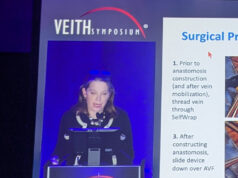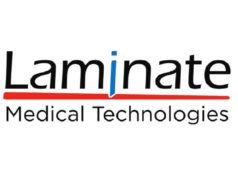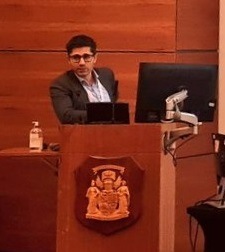
A cost-modelling analysis in real-world comparator groups has illustrated a potentially significant financial benefit across the UK healthcare system to using the VasQ external support device (Laminate Medical Technologies) for surgical arteriovenous fistula (AVF) creation as a standard of care compared to traditional techniques. European data supporting this—and positive clinical outcomes associated with VasQ—were presented by Robert Shahverdyan (Asklepios Klinik Barmbek, Hamburg, Germany) at the Vascular Access Society of Britain and Ireland (VASBI) annual scientific meeting (29–30 September, Glasgow, UK).
In his VASBI presentation, Shahverdyan posited that AVFs created using VasQ have demonstrated high rates of maturation, functional success (AVF being used for dialysis) and secondary patency with no apparent increase in complications or expense versus AVFs created via more traditional methods, in his experiences. Shahverdyan further stated that, across multiple international studies, the device has showed a combined functional success of 89% and a median time to cannulation of 42 days. “This is a major improvement on similar, historical surgical series [without VasQ] where non-maturation and failure of functional use are as much as 50%,” he said.
In addition to this clinical benefit, AVFs created using VasQ at Shahverdyan’s centre lowered cost per patient by 21% (-€926.45) as well as cost per-successful-access by 23% (-€1,398.07). These cost reductions were the effect of VasQ reducing the need for additional maturation procedures or abandonment in favour of an alternative access option, he reported, but noted the limitations of these analyses due to their preliminary nature.
Touching on a single-centre experience from the University of Messina (Messina, Italy), Shahverdyan highlighted similar findings, with a 26% (-€1,079.46) per-patient cost saving and a 43% (-€2,325.48) cost per-successful-access saving. And, summarising these data and his own alongside a multicentre study from Italy and Spain, he further relayed cost reductions with VasQ in radiocephalic AVFs as compared to non-VasQ and snuffbox fistulas at his centre. These savings ranged from 24% (-€1,106.13) to 43% (-€2,376) between the different centres and fistula locations involved.
What do these data mean?
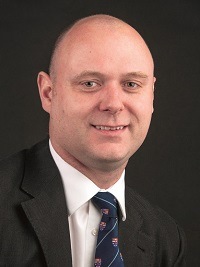
As Nicholas Inston (Queen Elizabeth Hospital, Birmingham, UK) told Renal Interventions, discussing the high rates of primary patency and early cannulation in Shahverdyan’s findings, and other positive results seen in multiple studies with VasQ to date, these data are “important” because they are based around functional success rather than surrogate markers of maturation. “In recent studies of some other devices, the access was deemed mature at an early stage—yet multiple further procedures such as angioplasties were required for it to be functional,” he stated. “The time from [fistula] creation to cannulation is the important measure here. If we have a high functional success rate, and a shorter time to successful use, the need for central venous catheters [CVCs] and maturation procedures should decrease.”
According to Inston, one of the most expensive eventualities in vascular access is when a patient starts off with a fistula, which then fails to become usable for dialysis, resulting in a CVC followed by another attempted fistula creation. “You can avoid all of this if you can just get it right first time with this device,” he added. “The clinical relevance of these data is very good.”
“In terms of new devices, there have been no major advances like this in the last 50 years, since the fistula was first described,” he continued. “The endovascular/percutaneous AVFs are a different way of doing it but the outcomes are not this order of magnitude better.” Inston also stated that the data on VasQ thus far suggest its benefits apply across the full spectrum of fistula sizes, locations and patient types—as opposed to a select group. “The data are there to say this is applicable to all patients, but further work will be needed to see if certain groups benefit more than others,” he noted.
Modelling UK impact
The clinical and economic figures delivered by Shahverdyan at VASBI 2022 form part of the data used by Laminate to create a national-level cost model across the UK National Health Service (NHS). In collaboration with Myton Medtech Consulting, Laminate moved to develop a budget-impact model that would determine the possible financial and resource benefits to NHS England of introducing its novel external support device across the UK. Precise definitions and categorisation of patients’ AVF creation progress, and any complications experienced, were used alongside hospital episode statistics—creating a modelled, real-world, ‘non-VasQ’ comparator group based on thousands of NHS patients.
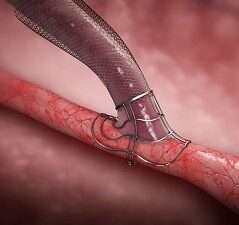
The company then contrasted the impact of VasQ reported in previous clinical studies, derived from more than 500 patients across various global studies of the device, with this comparator. The results of their analysis indicated likely gains the NHS could “reasonably expect” if VasQ is adopted at hospitals, integrated care systems or nationally. After accounting for the cost of implementing the device, the model anticipated an overall financial saving to the NHS of £6,484,471.90 within a financial year, representing a 148% national-level return on investment, and a resource saving of 1,334 fewer procedures due to avoided complications.
Having modelled the expected NHS budget and resource impact of nationwide VasQ adoption, under the assumption that every AVF is treated with the device, Laminate claims it has been able to “communicate a relevant, compelling value proposition” to key decision-makers in the NHS, with a controlled and transparent adoption plan having also been developed. Inston, who assisted with this modelling, concluded that, while current VasQ data are “supportive of providing clinical benefits and having an impact on the pathway of vascular access creation”, these modelled outcomes still need to be validated in a real-world setting, with further VasQ treatments now planned in the UK and elsewhere in Europe.

